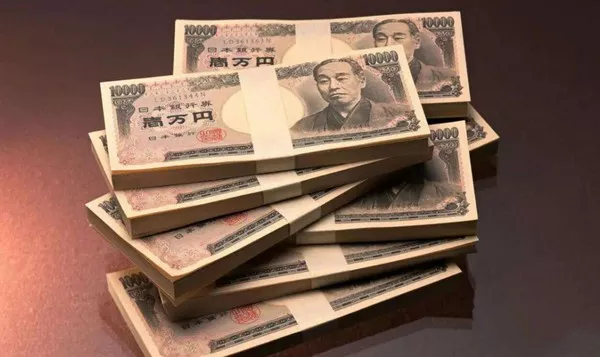In the dynamic world of international finance, currency exchange rates play a pivotal role in shaping global economic landscapes. One such crucial pair is the Japanese Yen (JPY) to United States Dollar (USD) exchange rate. Investors, businesses, and policymakers closely monitor the JPY to USD exchange rate due to its significant impact on trade, investments, and economic stability. In this article, we delve into a comprehensive analysis of the current JPY to USD exchange rate, exploring its implications and the factors influencing its movements.
Current Exchange Rate Analysis
The current JPY to USD exchange rate stands at 0.0070, reflecting the value of one Japanese Yen against the US Dollar. This means that 12,000 jpy can be exchanged for 84.28usdThis rate is a critical indicator of the economic relationship between Japan and the United States, two of the world’s largest economies. Analyzing the current exchange rate involves examining various factors that contribute to its fluctuations, including economic indicators, geopolitical events, and monetary policies.
Economic Indicators Driving JPY to USD Movements
The JPY to USD exchange rate is heavily influenced by economic indicators from both Japan and the United States. Key factors such as GDP growth, unemployment rates, and inflation play a crucial role in determining the strength of each currency. For instance, a robust Japanese economy, marked by high GDP growth and low unemployment, tends to strengthen the JPY against the USD.
Global Trade Dynamics and JPY to USD Exchange Rate
Japan and the United States are major players in global trade, and their trade dynamics significantly impact the JPY to USD exchange rate. Trade balances, tariffs, and trade agreements between the two nations can influence the value of their respective currencies. A trade surplus in Japan could lead to an appreciation of the JPY against the USD, while a trade deficit may have the opposite effect.
Monetary Policies and Central Bank Actions
Central banks, including the Bank of Japan and the Federal Reserve, play a pivotal role in shaping the JPY to USD exchange rate through their monetary policies. Interest rate decisions, quantitative easing measures, and other policy tools can impact the attractiveness of each currency for investors. Divergent monetary policies between the two nations often lead to exchange rate fluctuations.
Geopolitical Events and Currency Movements
Geopolitical events can introduce volatility into currency markets, affecting the JPY to USD exchange rate. Political tensions, trade disputes, and global economic uncertainties can lead to fluctuations as investors seek safe-haven currencies. The Japanese Yen, historically considered a safe-haven currency, tends to strengthen during periods of global uncertainty.
Impact of Inflation Differentials on JPY to USD Exchange Rate
Inflation differentials between Japan and the United States can significantly impact the JPY to USD exchange rate. If inflation in Japan outpaces that in the United States, it could lead to an appreciation of the JPY against the USD. Conversely, lower inflation in Japan may contribute to the depreciation of the JPY relative to the USD.
Technological Advances and Financial Markets
Advancements in technology have transformed financial markets, influencing currency exchange rates, including JPY to USD. Algorithmic trading, high-frequency trading, and the use of artificial intelligence in financial decision-making contribute to rapid and sometimes unpredictable currency movements. Traders and investors must adapt to the evolving landscape shaped by technological innovations.
Trade Balance and Its Significance in JPY to USD Dynamics
A nation’s trade balance, representing the difference between exports and imports, has a direct impact on its currency’s value. For Japan, a trade surplus implies a higher demand for the JPY in international markets, potentially leading to an appreciation against the USD. Understanding the intricacies of trade balance dynamics is essential for forecasting JPY to USD movements accurately.
See Also: Exploring the Intricacies of the Ten Yen Coin: A Comprehensive Guide
Currency Market Speculation and JPY to USD
The foreign exchange market is also influenced by speculative activities. Traders and investors engaging in currency speculation can trigger short-term fluctuations in the JPY to USD exchange rate. Market sentiment, news, and rumors can fuel speculative movements, leading to rapid and sometimes unpredictable changes in currency values.
Long-Term Trends in JPY to USD Exchange Rate
Examining long-term trends provides valuable insights into the JPY to USD exchange rate’s historical performance. Understanding the historical context allows analysts to identify patterns and potential future movements. Long-term investors often consider historical trends to make informed decisions, balancing short-term volatility with the currency pair’s overall stability.
Conclusion: Navigating the JPY to USD Landscape
In conclusion, the JPY to USD exchange s a critical benchmark in the world of international finance. Investors, businesses, and policymakers must navigate the complex landscape shaped by economic indicators, geopolitical events, and monetary policies. The current rate of 0.0070 underscores the intricate relationship between Japan and the United States. As the global economic landscape continues to evolve, staying abreast of these factors is essential for making informed decisions in the ever-changing world of currency exchange.
Related Topics:
Current JPY Exchange Rate: 6000 Yen in US Dollars
Current JPY Exchange Rate: 1,000 Yen in US Dollars
Current YEN Exchange Rate: 1 JPY to USD
























